Introduction
In the rapidly evolving digital landscape, a robust e-commerce strategy is paramount for businesses seeking to thrive. This comprehensive approach involves meticulous planning and execution of online activities aimed at driving sales and enhancing customer engagement. By integrating advanced technologies such as Artificial Intelligence (AI) and automation, businesses can significantly improve operational efficiency and customer satisfaction.
Real-world examples, like MUJI's transition to an upgraded e-commerce platform and the success of AI tools during major sales events, underscore the transformative impact of a well-executed e-commerce strategy. This article delves into the key components, benefits, and best practices of e-commerce strategies, offering valuable insights for businesses aiming to gain a competitive edge and achieve sustained growth in the digital marketplace.
Understanding E-commerce Strategy
Online commerce approach includes the careful organization and implementation of internet business activities focused on increasing sales and improving client interaction. This strategy integrates various marketing, technological, and operational elements to create a seamless online shopping experience.
Retailers can capitalize on emerging technologies like Artificial Intelligence (AI) to enhance client interaction and operational efficiency. With AI, businesses can examine client information to provide tailored shopping experiences, enhancing both satisfaction and sales. The global retail market, with a projected valuation of $55.53 billion by 2030, is set to benefit significantly from AI, boasting a compound annual growth rate (CAGR) of 34.1%.
Automation also plays a crucial role in streamlining operations, reducing manual tasks, and allowing employees to focus on more strategic activities. Contrary to the fear of job loss, automation opens new roles in tech management and data analysis, enhancing overall productivity.
Real-world examples highlight the effectiveness of strategic planning and technology integration. For instance, MUJI's transition to the Bigcommerce platform enabled the brand to replace its outdated system, resulting in improved traffic and conversions. Likewise, Taobao and Tmall's implementation of AI tools during the 11.11 sales festival greatly enhanced loyalty among shoppers, bringing in over 100 million new members.
These insights demonstrate that a strong online business approach, supported by advanced technologies and thorough planning, can provide a competitive advantage, enhance customer loyalty, and promote sustained business growth.
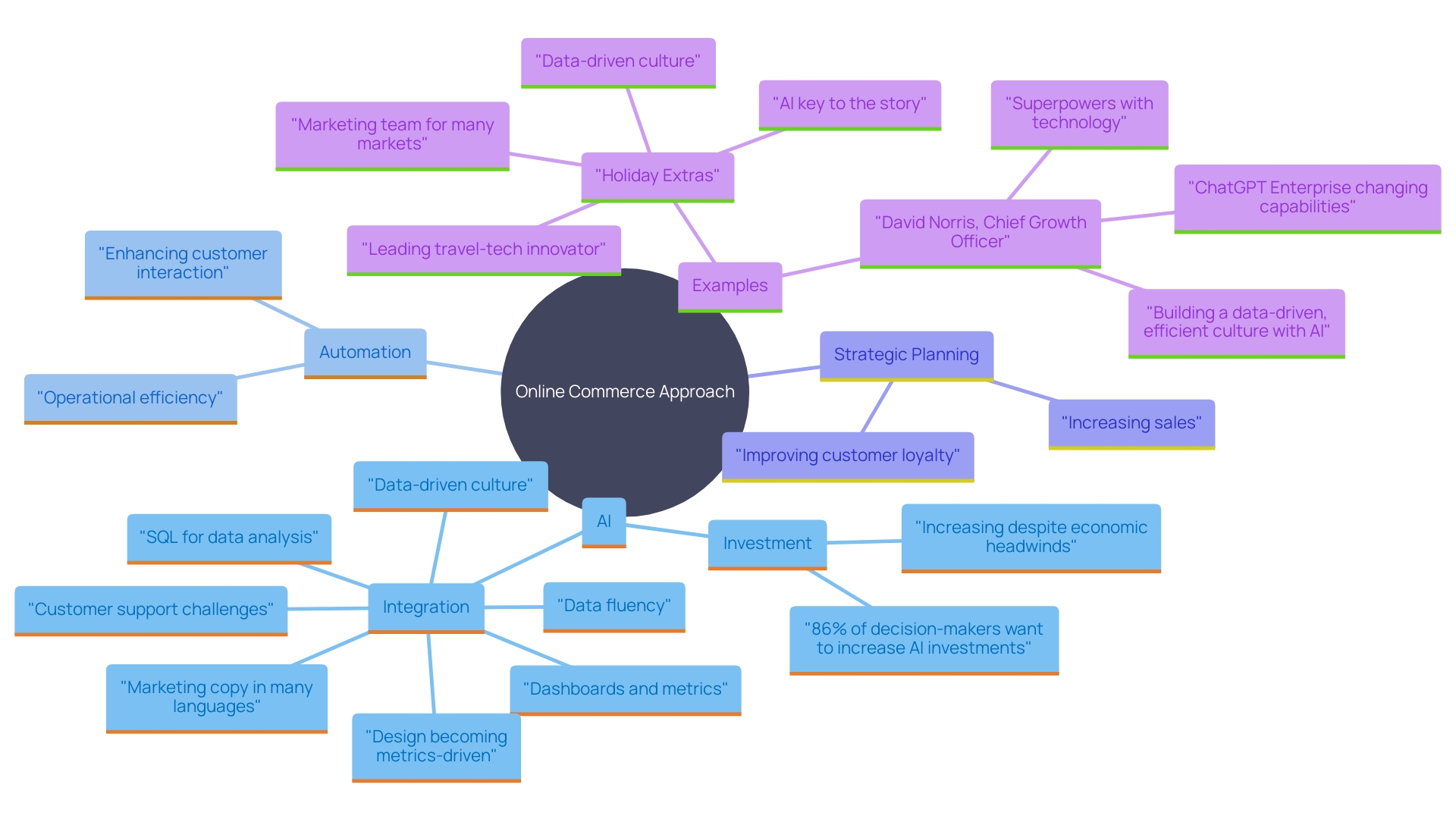
Key Components of E-commerce Strategy
A successful online retail strategy hinges on the seamless integration of several critical components: website optimization, user experience design, product assortment, pricing strategies, and digital marketing. In today's competitive landscape, ensuring your e-commerce platform is user-friendly, scalable, and secure is paramount.
User-friendliness defines the shopper’s shopping experience. A well-designed, intuitive website can significantly enhance engagement and conversion rates. For example, providing numerous payment options accommodates various buyer preferences, resulting in a more seamless and satisfying shopping journey. Consider including clear and accurate product photos, which assist buyers in understanding what to expect, thereby reducing return rates and increasing satisfaction.
Scalability is another crucial factor. As your business grows, your e-commerce platform must handle increased traffic and sales while accommodating new features or changes. This adaptability is essential for sustaining long-term growth and maintaining a competitive edge.
Security cannot be overstated in the age of digital transactions. Strong security measures safeguard sensitive client information and foster trust, which is a cornerstone of client loyalty.
Additionally, digital marketing and conversion rate optimization (CRO) play vital roles. By customizing product suggestions, email outreach, and website material according to personal preferences, you can greatly enhance satisfaction and increase sales. Observing rivals and adjusting your approaches accordingly can offer a competitive edge. Utilizing search engine optimization (SEO) guarantees that your content connects with the appropriate audience, enhancing visibility and drawing in prospective clients.
Integrating these components into your online business approach not only draws in and keeps clients but also enhances conversion rates, ultimately propelling your company's success in a swiftly changing market.
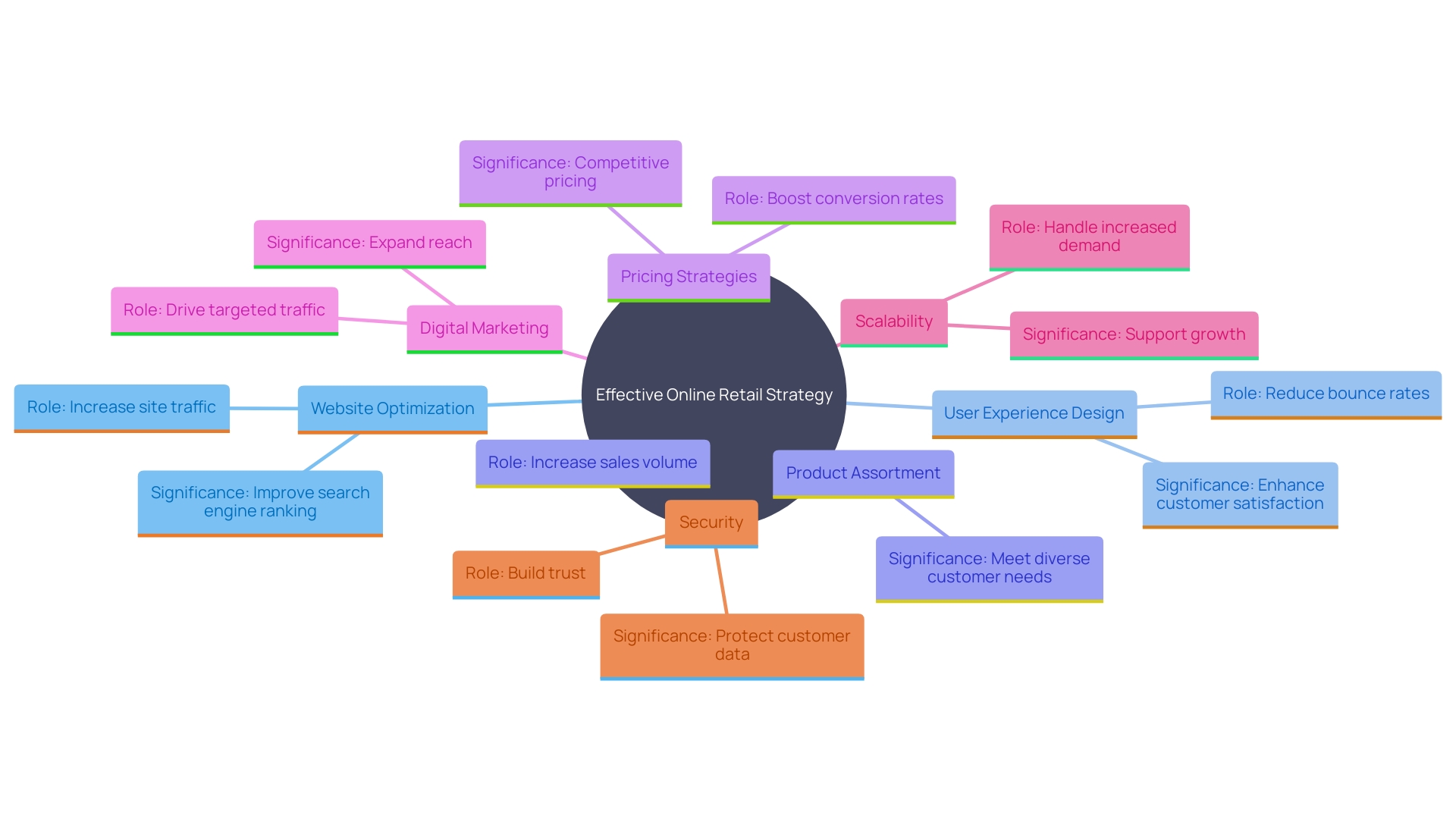
Benefits of Implementing E-commerce Strategy
Implementing a well-defined online retail strategy can unlock numerous advantages. By examining client behavior through information science, organizations can obtain significant insights that influence decision-making. For instance, Dick's Sporting Goods, which now holds 14.2% of the $67.2 billion U.S. sporting goods market, utilized data analytics to adjust to consumer needs and enhance their online sales network. In 2021, worldwide retail online sales approached around $4.9 trillion and are expected to increase by 50% by 2025, emphasizing the vast opportunities in this area.
Increased market reach is another benefit of a robust e-commerce strategy. SMEs have shown growing optimism about digital opportunities, with 69% expressing more confidence in growth prospects than six months ago. Additionally, operational efficiency can be significantly improved. By focusing on conversion rate optimization, businesses can streamline processes and reduce costs, leading to higher profit margins.
Improved client loyalty is essential for ongoing growth. Loyalty programs and personalized marketing, driven by data science, help build lasting relationships with customers. 'Dick's Sporting Goods' emphasis on growing in-house brands and enhancing their online sales network led to a 7.7% rise in net sales in Q3 of 2022 compared to the prior year. Such strategic initiatives demonstrate the transformative effect of a well-executed online commerce strategy.
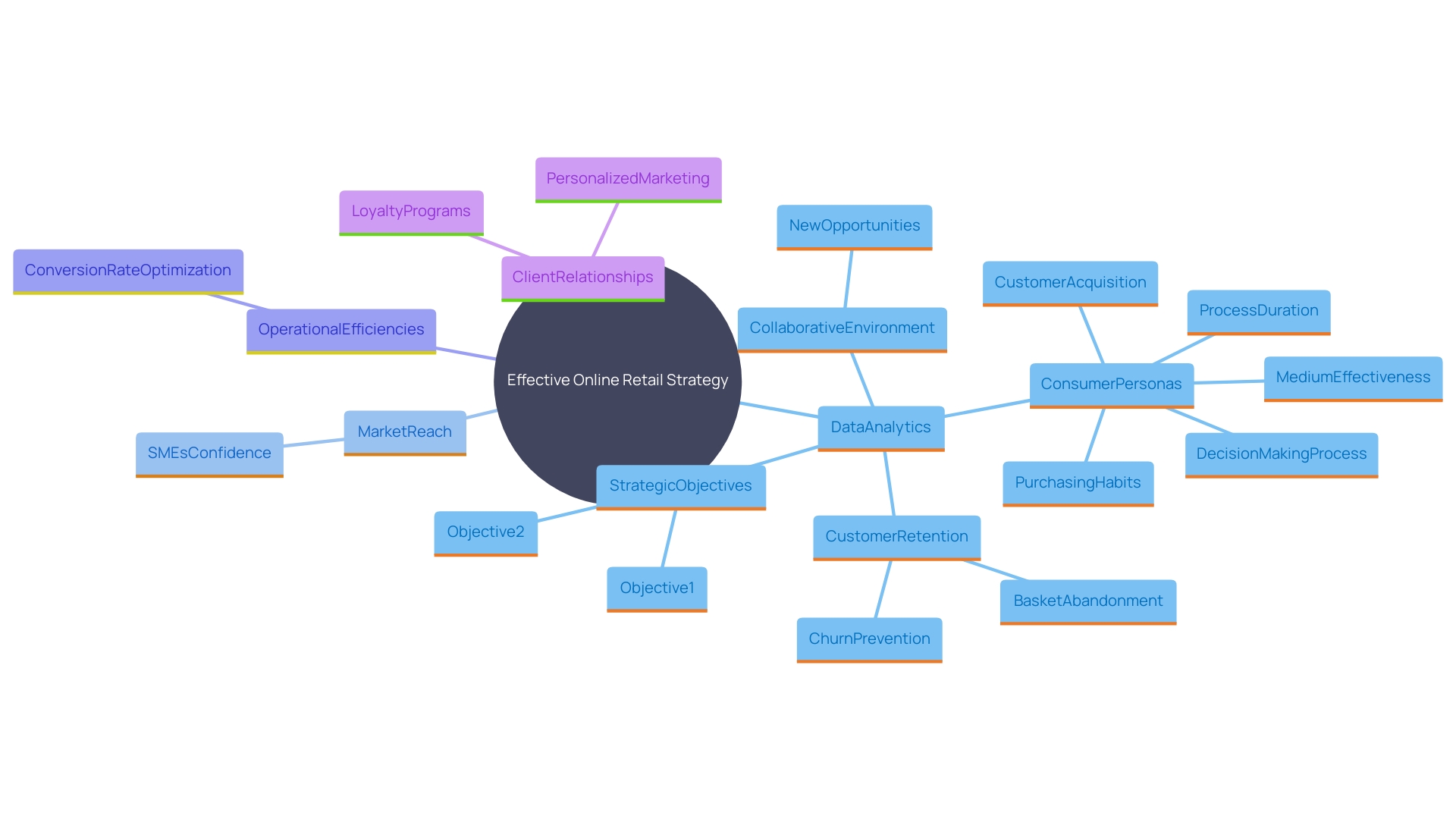
Strategies for Value Creation in E-commerce
Generating value in online commerce relies on strategic innovation and data-driven personalization. With the global e-commerce market forecasted to soar from 4.9 trillion U.S. dollars in 2021 to 7.4 trillion dollars by 2025, businesses must leverage data analytics to stay competitive. Comprehending client behavior through metrics like post-acquisition value (PAV) enables companies to pinpoint and invest in high-value individuals effectively. By analyzing client interactions at various touchpoints, from ad clicks to purchase reviews, businesses can tailor personalized shopping experiences that enhance user satisfaction and loyalty. Furthermore, integrating strong client support services and targeted marketing strategies based on predictive analytics can significantly distinguish a brand in a crowded marketplace. As Roy Robinson, CPO at Mention Me, emphasizes, utilizing advocacy insights to identify high-value segments can drive substantial revenue growth, with referred individuals demonstrating a 2x higher lifetime value and a 5x likelihood to refer others. In such a dynamic environment, continuous optimization and innovative approaches are essential for online retail success.
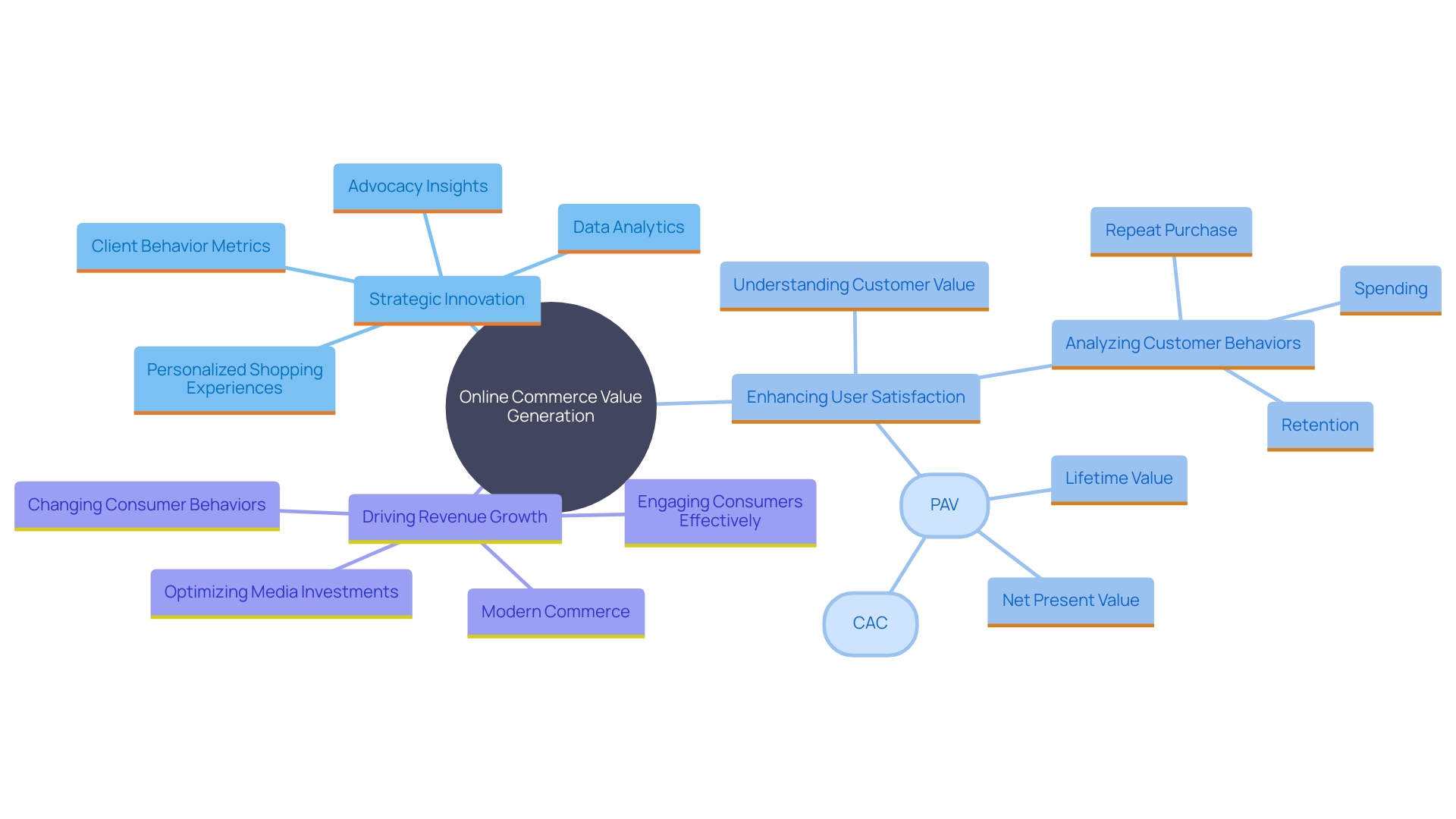
Best Practices in E-commerce Strategy
To thrive in the dynamic online retail environment, companies must continuously optimize their online platforms, analyze customer behavior, and stay abreast of industry trends. With retail e-commerce sales expected to rise from $4.9 trillion in 2021 to $7.4 trillion by 2025, utilizing scientific analysis has become essential. E-commerce platforms gather extensive quantities of information from different touchpoints—advertisements, product clicks, purchases, and reviews. This information is a goldmine, providing actionable insights that assist in strategic targeting and reducing costs.
Conversion rate optimization (CRO) is foundational for e-commerce growth. This practice, born in the early internet days, remains vital as it enhances user experience and boosts site performance. Contemporary CRO utilizes analytical information to enhance user interactions, making certain that websites not only draw in but also hold onto visitors. A slow, poorly designed website can drive customers away, underscoring the need for continuous optimization.
A/B testing stands out as a powerful tool in this optimization arsenal. By running controlled experiments, companies can make data-driven decisions that enhance user engagement and business outcomes. Effective A/B tests require clear hypotheses, measurable outcomes, and sufficient traffic to yield reliable results. The top 3% of companies run over 500 tests annually, underscoring the importance of rigorous experimentation in staying competitive.
In essence, the merging of information science, CRO, and A/B testing forms the foundation of a strong online retail approach. These elements not only drive growth but also ensure that companies can adapt swiftly to evolving consumer preferences and technological advancements.
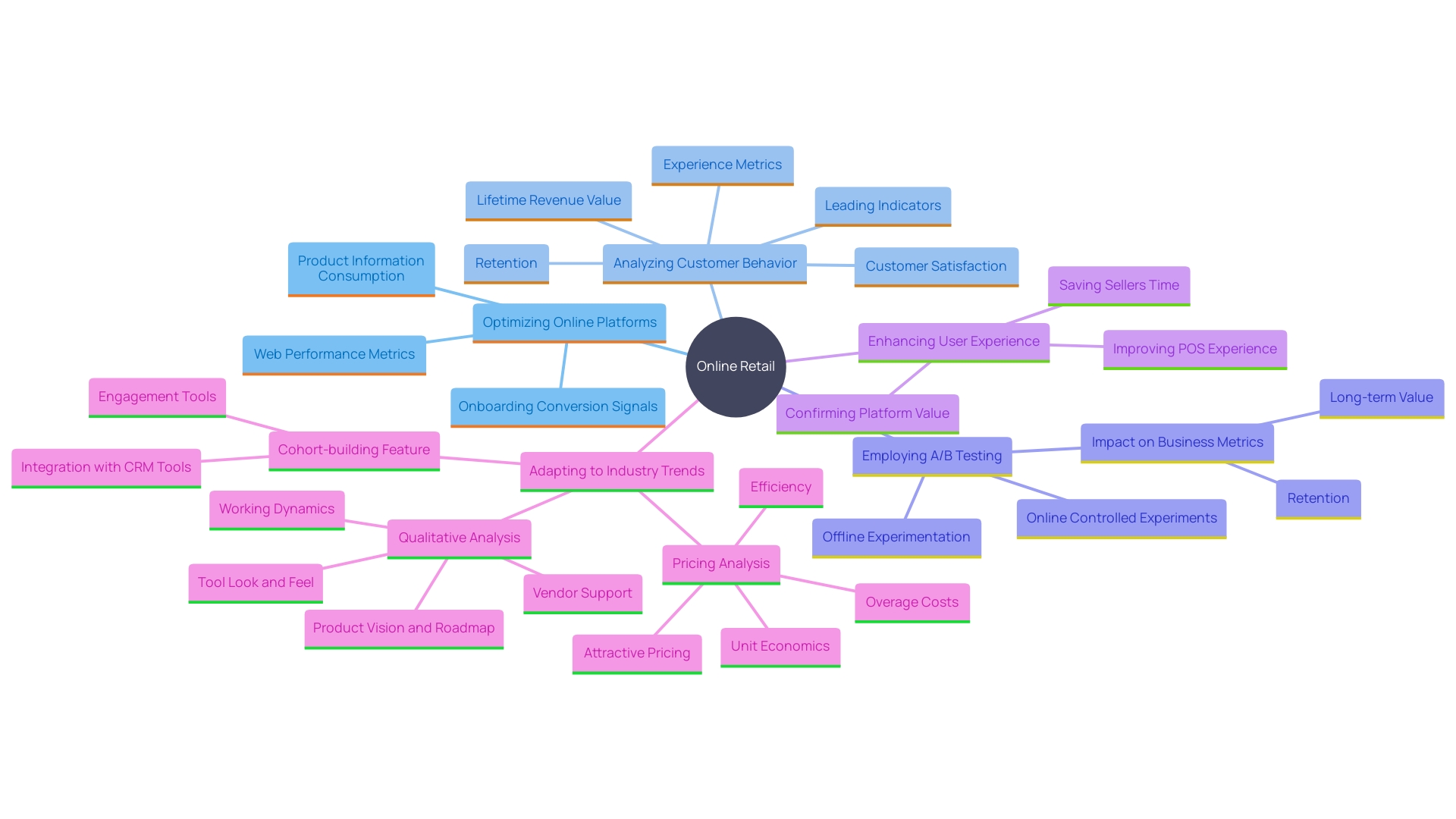
E-commerce Strategy for Different Business Models (B2B, B2C)
Various business models require distinct e-commerce approaches to guarantee success and competitiveness. For instance, B2B platforms emphasize relationship management and bulk purchasing capabilities. This was illustrated by Nets, a digital payment solution provider that customized its services to satisfy the varied requirements of clients throughout Europe, converting intricate information into user-friendly formats. Conversely, B2C approaches emphasize user experience and emotional engagement, utilizing data science to improve customer interactions and boost sales. 'In 2021, retail online sales reached around $4.9 trillion worldwide and are expected to increase by 50% by 2025, emphasizing the significance of comprehending and applying detailed approaches for each business model.'.
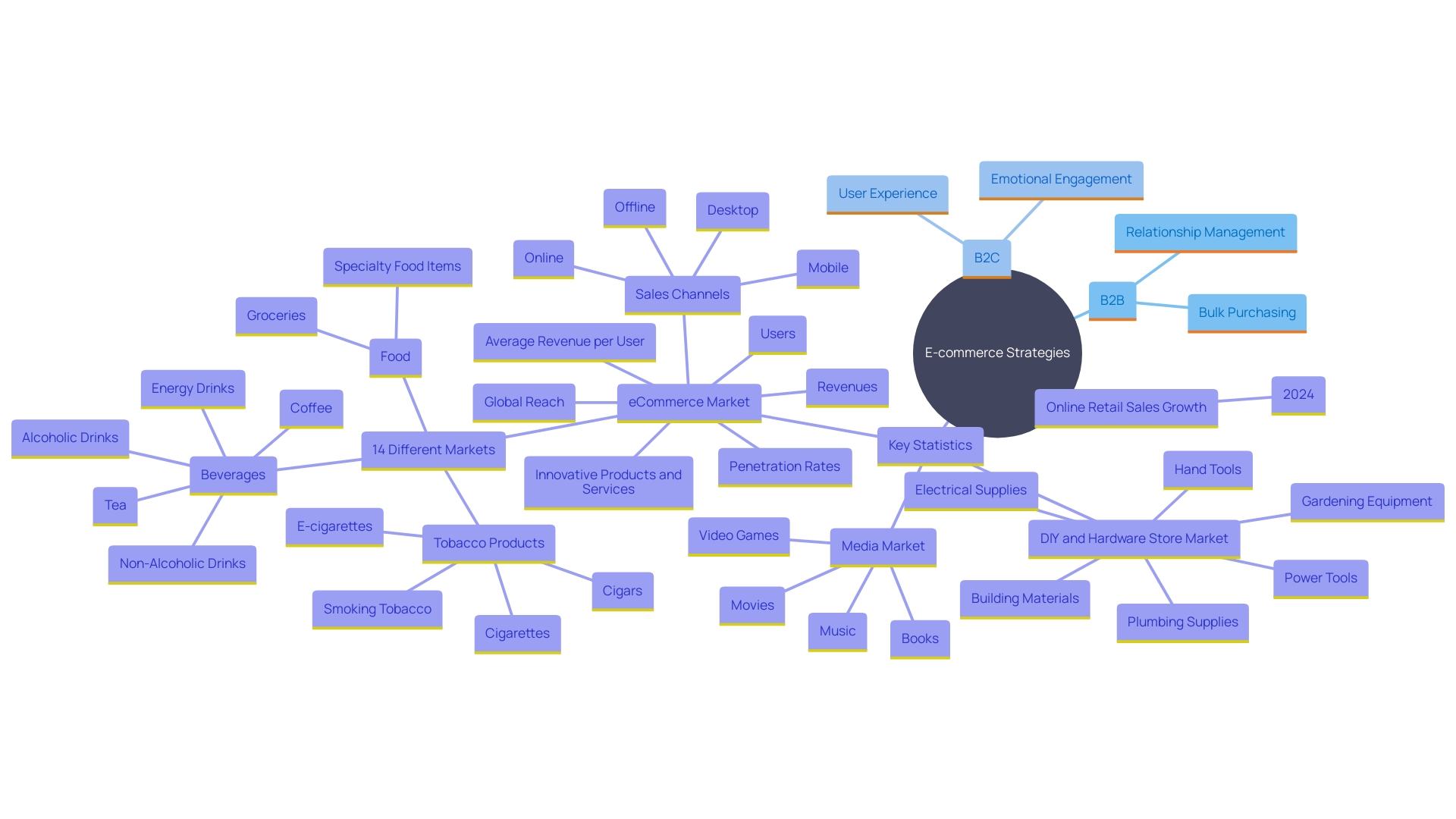
Digital Marketing Strategies for E-commerce (SEO, PPC, Social Media)
Successful online marketing approaches such as search engine optimization (SEO), pay-per-click (PPC) advertising, and social media promotion are essential for increasing visitors to online retail platforms. SEO stands out as a long-term strategy, enabling businesses to build trust and authority by assisting clients in making informed decisions. According to recent statistics, e-commerce platforms must navigate a highly competitive landscape, with each striving to attract more visitors.
PPC advertising, while effective in generating immediate traction, depends heavily on the advertising budget. The moment the ads stop, traffic declines. This was evident in a case study involving a US-based hotel management company. Initially, their Facebook Ads efforts saw minimal engagement and conversions. However, after setting up Google Analytics, Facebook Pixel, and other tracking tools, they optimized their campaigns, eventually leading to significant improvements in bookings.
Social media marketing also plays a vital role in enhancing brand visibility and engaging with clients. Small businesses, in particular, can leverage social media to reach target audiences and boost brand awareness. Experimenting with different content types, such as videos and images, can rekindle interest and drive conversions. Keeping up with the latest trends and technologies, and building relationships with industry experts can open new growth opportunities.
Ultimately, a cohesive approach that integrates these channels is essential. This ensures that the marketing plan remains dynamic, adapts to new developments, and effectively targets the right audience.
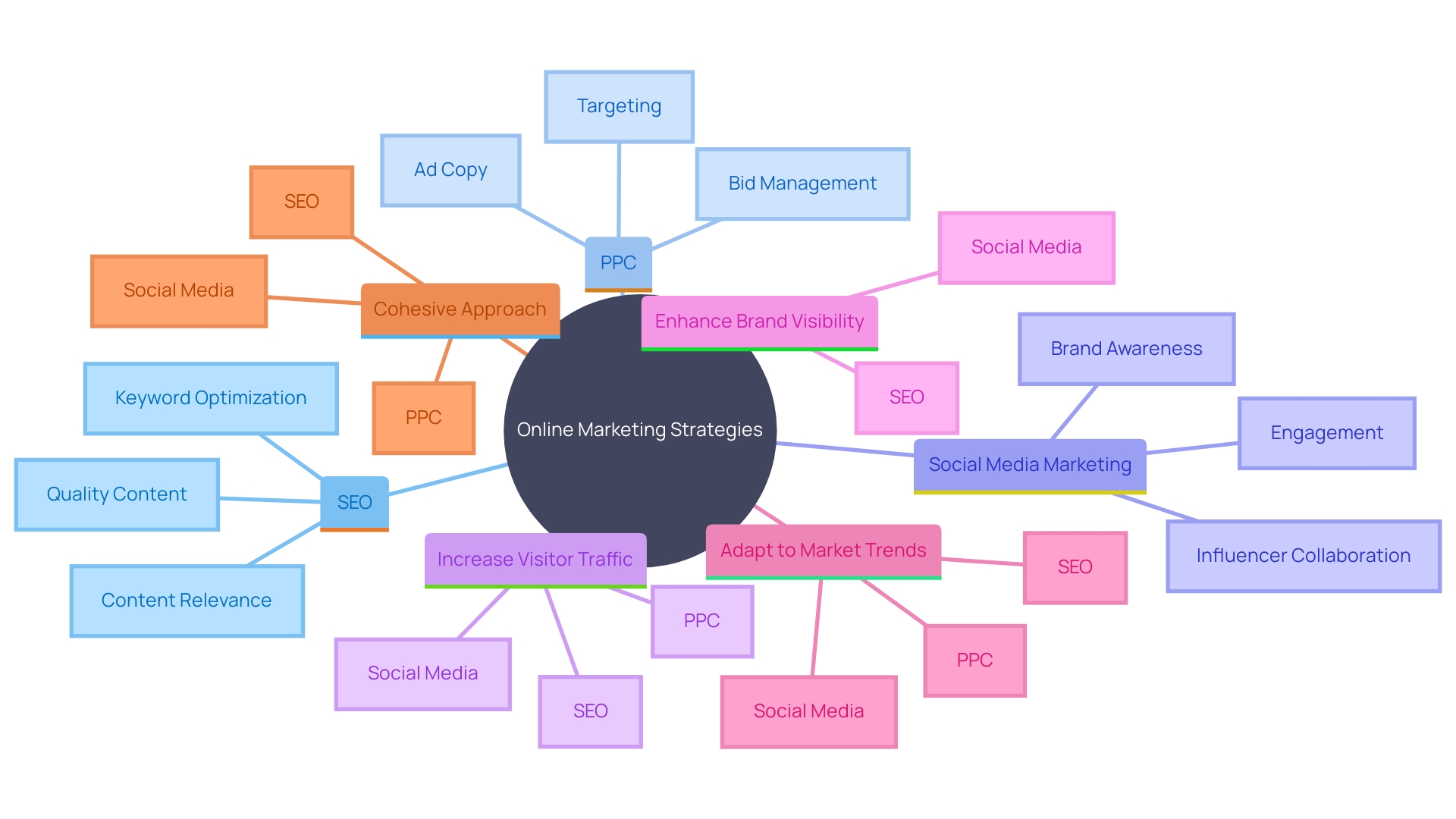
Product Launch and Post-Purchase Strategies
Effective launch strategies for new products should encompass a comprehensive pre-launch marketing campaign to generate excitement and well-planned post-launch follow-ups to ensure client satisfaction. An exemplary approach is seen in Shake Shack's utilization of Qualtrics for product research before launching new items, which significantly improved their marketing communication and product acceptance.
Engaging clients after purchase is crucial for long-term retention. Requesting feedback and implementing loyalty programs are powerful tools in this regard. As studies indicate, 70 to 90 percent of new CPG product launches fail within their first year primarily due to inadequate market research. By understanding client needs and preferences through detailed market research, companies can refine their products and create compelling value propositions.
Moreover, competitive analysis is vital during the launch stage. It assists in modifying approaches to remain ahead in a saturated market. For instance, the competitive landscape insights can guide the crafting of a value proposition that highlights the unique benefits of the product, thereby enhancing its appeal to the target audience.
Real-world examples underscore the importance of a strategic approach. A US-based hotel management company, after facing initial setbacks with Facebook Ads, achieved remarkable success by establishing a robust infrastructure for campaign monitoring and optimization. This foundation allowed for strategic adjustments that ultimately drove increased bookings.
In summary, a well-rounded launch strategy that includes pre-launch hype, post-launch engagement, thorough market research, and competitive analysis can significantly enhance the success rate of new product introductions, ensuring both immediate impact and sustained customer loyalty.
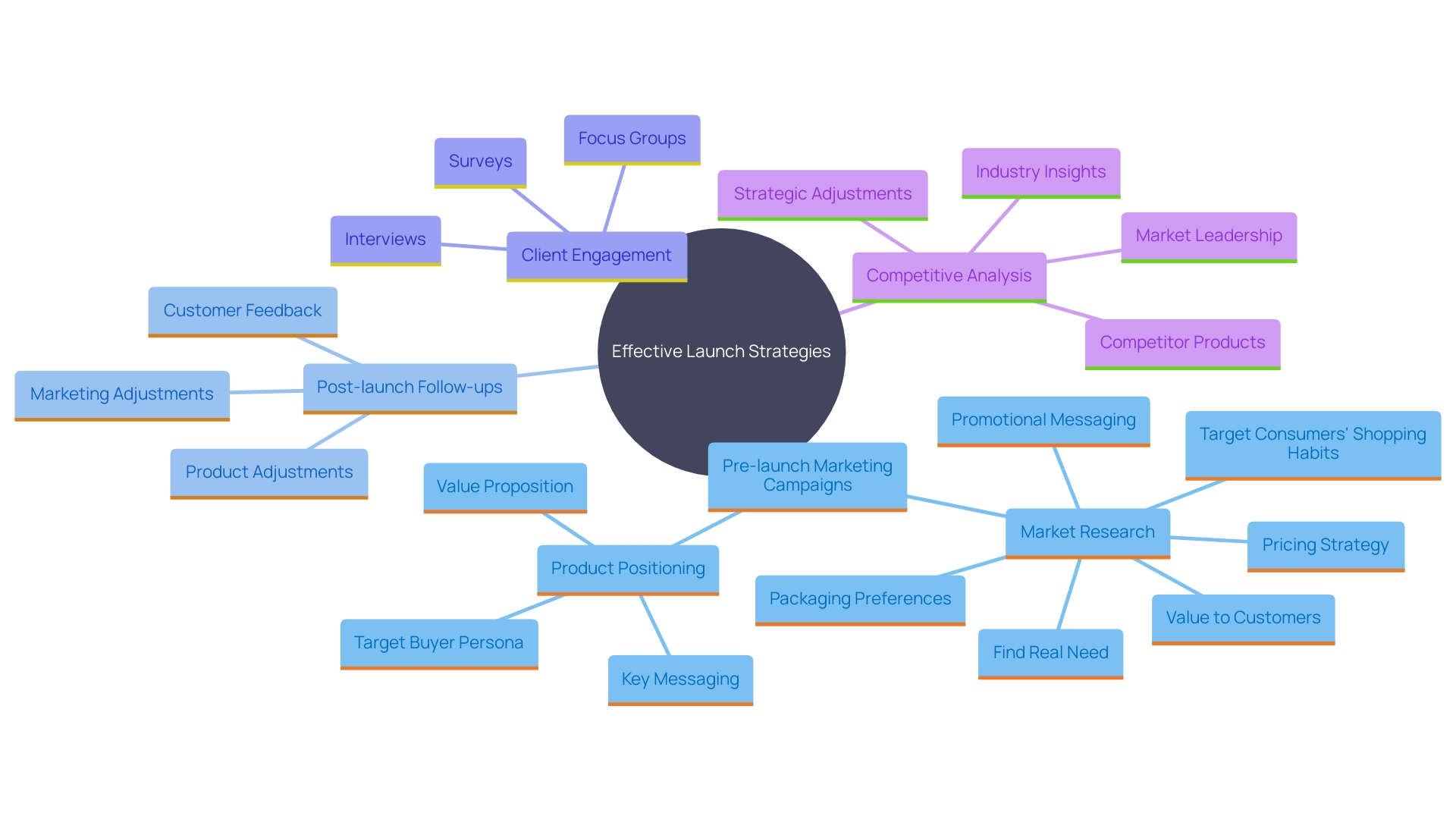
Conclusion
A comprehensive e-commerce strategy is essential for businesses aiming to excel in a competitive digital marketplace. By focusing on the integration of advanced technologies such as AI and automation, companies can enhance operational efficiency and customer satisfaction. The successful execution of an e-commerce strategy not only drives sales but also fosters customer loyalty, as illustrated by real-world examples like MUJI and Dick's Sporting Goods.
Key components of a successful e-commerce strategy include website optimization, user experience design, and robust digital marketing efforts. Prioritizing user-friendliness and security ensures that customers feel valued and protected, while effective marketing strategies like SEO and PPC can significantly increase visibility and traffic to e-commerce platforms. Moreover, understanding the specific needs of different business models—whether B2B or B2C—enables tailored approaches that resonate with target audiences.
The benefits of implementing a well-defined e-commerce strategy are profound. From increased market reach and operational efficiency to enhanced customer loyalty, the potential for growth in the e-commerce sector is undeniable. Companies must continuously optimize their platforms and leverage data analytics to create personalized experiences that drive engagement and conversion rates.
In conclusion, a robust e-commerce strategy, grounded in best practices and innovative approaches, is vital for sustained success in the digital landscape. By embracing change and adapting to consumer preferences, businesses can secure a competitive edge and thrive in an ever-evolving marketplace.





